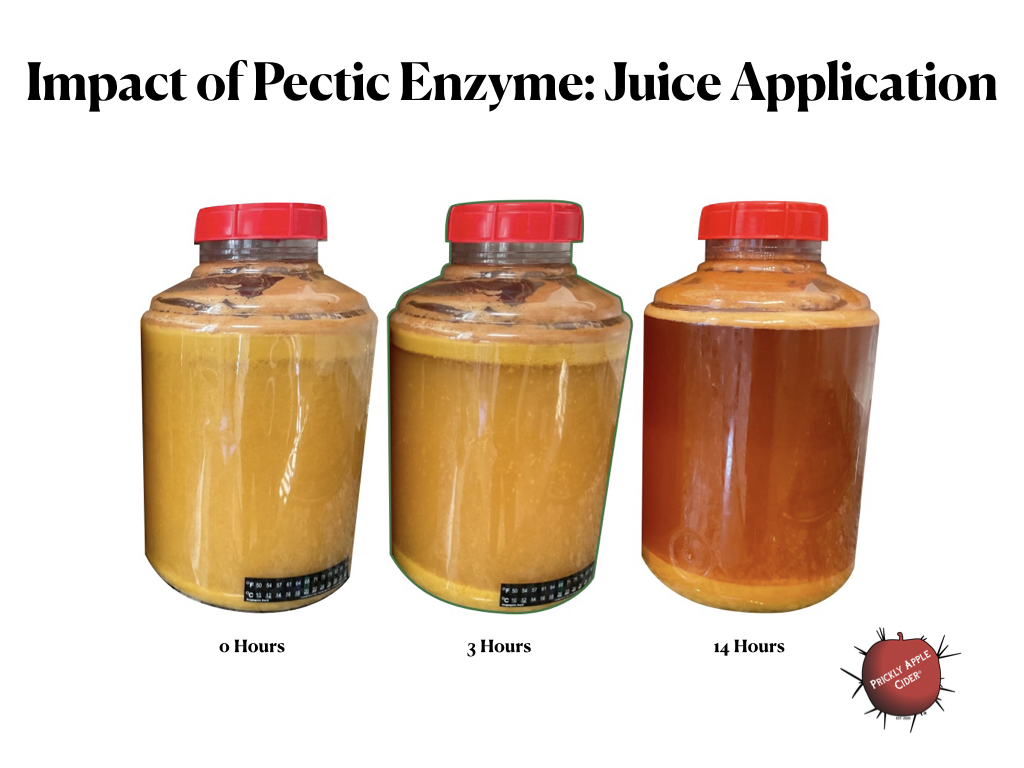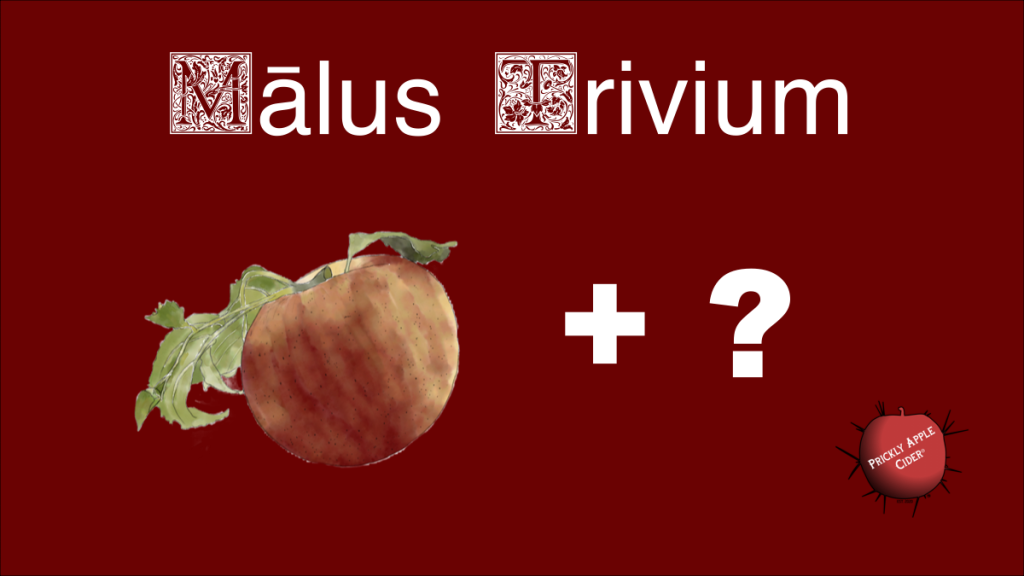Should juice be clear or cloudy, or does it really matter? If you are like me, you might think that cloudy juice will provide more flavor. But, as I have learned and demonstrated with some experiments, clearer juice actually creates more fruity aromas. Juice with high turbidity (cloudy) or colloidal compounds means it has higher levels of suspended solids. These can be pectin but can also be solids from the juicing process. These solids harbor and protect the natural lactic and acetic acid bacteria present, so the solids provide an ideal condition for the bacteria to grow. Normally, yeast outcompete bacteria and even kill off many of the weaker strains. Solids protect the bacteria and give it more access to the nutrients and compounds needed to grow. Unfortunately, this growth occurs in an oxygen rich environment during the initial stage of fermentation. That allows the bacteria to produce undesirable or what are also called off-aromas. These are usually vegetative and grassy or worse, sulfur based.
This might make you think that you should remove all the solids or as many as possible. However, removing these solids can also remove nutrients and positive aroma compounds. Juice turbidity is usually recommended to be between 80 and 150 nephelometric turbidity units (NTU)(1). Not sure how to measure your juice turbidity in NTUs? Me either. My experiments have shown that what works well for me is to treat my apples or juice with pectic enzyme followed by a 12-24 hour cold crash before siphoning the clarified juice off the compacted sediment. This gives me a clarified juice but not a clear juice. The result is a cider with fruity aromas without nitrogen deficiency. If you are concerned about losing nutrients, you can supplement the juice with a yeast nutrient. Just make sure you are using an organic nitrogen based product and not a DAP or inorganic nitrogen based product. Organic nitrogen based yeast nutrients are usually made from inactive yeast or what is called Yeast Derivative Products (YDP). You can find a link to Fermaid-O on the recommended products page.
As always, the question of whether juice should be clear or cloudy is really a question about the final results. If your process produces great hard cider for you, wonderful. If you want to try to improve the fruitiness of your cider, try clarifying the juice before fermenting and see how you like the results. I personally find it to be worth the extra step in the cider making process.

(1) G Specht, Managing Wine Quality: Winemaking Technologies and Wine Quality, Chapter 1, Yeast fermentation management for improved wine quality, Woodhead Publishing Limited, 2010
Don’t miss any future answers to Cider Questions. Follow me and you will get a link to my latest article delivered to your inbox. It’s that easy!
Check out these posts for .
Did you enjoy these tips on making hard cider? Check out my book to learn more ideas and information on making and enjoying hard cider. It will help you develop a process that matches your desire and equipment. It will also show you how to pair cider with food to maximize your experience. You can find it as an eBook and a 7×10 paperback on Amazon or a 7×10 paperback on Barnes & Noble. Click on these Links to check them out.




Hello
Your articles are a great source of knowledge. Thank you
I have a question regarding clarified juice. There seems to be more and more cider makers using the cross flow filters to clarify both apple juice and apple cider (Canada):)
Are you aware of any good literature or do you have knowledge of cross flow filter performance and effects on the cider and juice products. I was thinking it may be an alternative to pasteurization. I would expect there are implications but to what extent.
LikeLike
Thanks for reading and I am glad you find the articles helpful. Cross-flow filtration is also called tangential filtration because the flow is parallel or tangential to the filter membrane. These systems are usually quite large so they are more common with commercial operations, so my knowledge comes from books and papers that I have read. I just finished an interesting one that you might enjoy. The book has been very good on many topics but chapter 5 is about filtration.
D. Wollan, Managing Wine Quality: Winemaking Technologies and Wine Quality, Chapter 5, Membrane and other techniques for the management of wine composition, Woodhead Publishing Limited, 2010
As noted in the chapter title, filtration is less about the specific method and more about the membrane used. Cross-flow filtration is less prone to plugging because of the flow and in this chapter, the discussion is about the possibility to remove harmful or undesirable compounds by using different membrane sizes. You can sterilize juice and cider with membranes that are defined by the micron rating where removing compounds, you start talking about Daltons and nano membranes. Cross-flow membrane require a lot more surface area than the more common dead-head membrane systems. This is why they are often large and only used in commercial operations. To clarify juice for fermentation, a simpler dead-head filter with a 5-20 micron rating will be ideal but you might want to pair that with a fining agent like pectinase to remove both solids and pectin. Cross-flow and osmosis systems would be more for stabilizing, concentrating, or removing faults from the juice or cider. Search clarification or filtration on the site for other articles that should reference additional papers that might be of interest. The Wine Technologies and Wine Quality is a great reference book and I would also recommend V.K. Joshi’s Science and Technology of Fruit Wines.
LikeLike